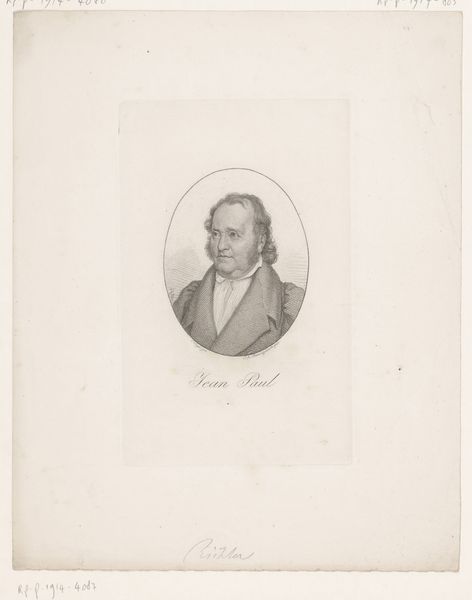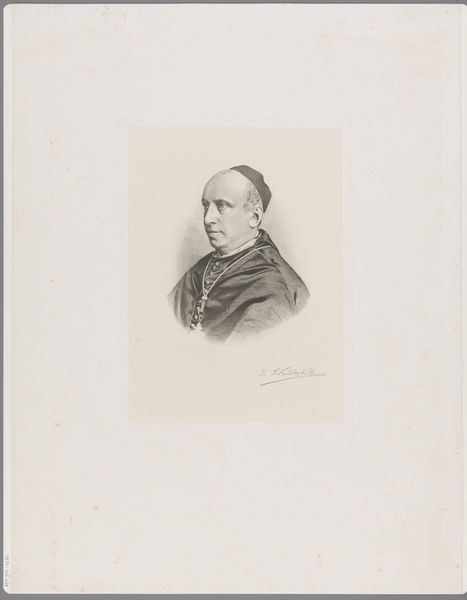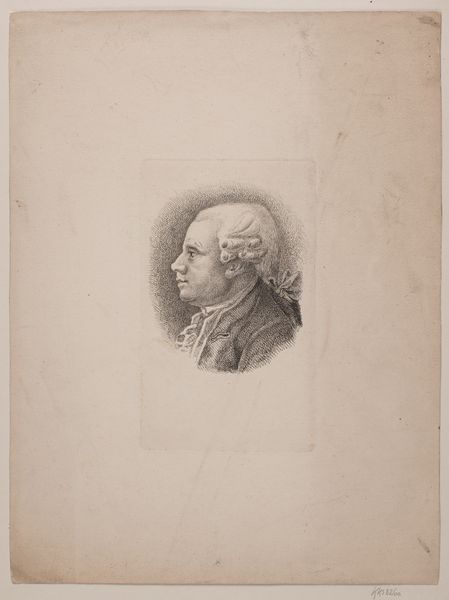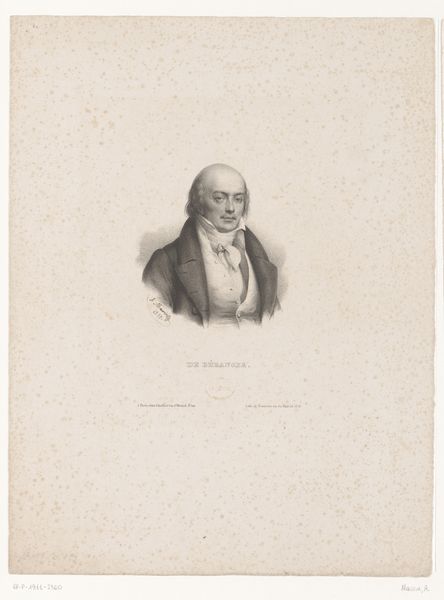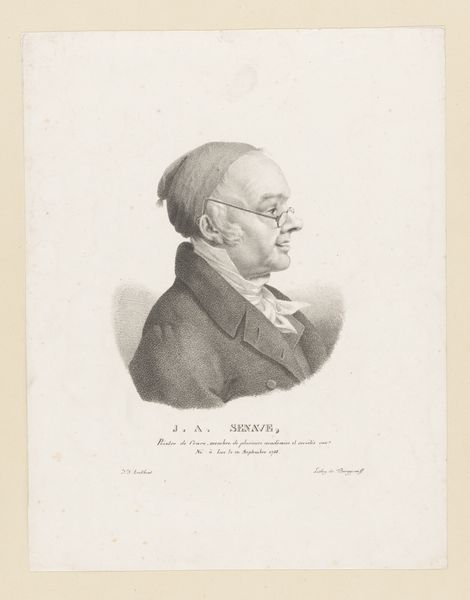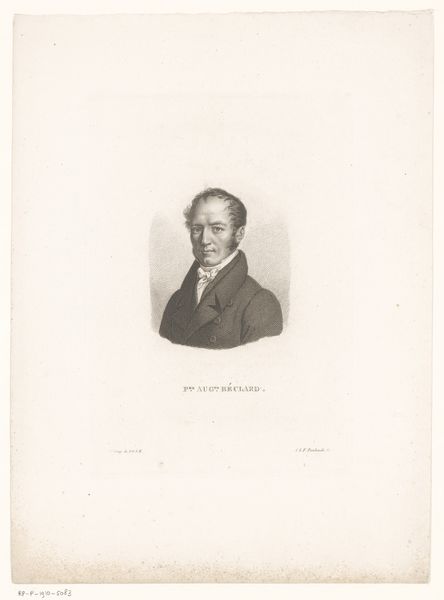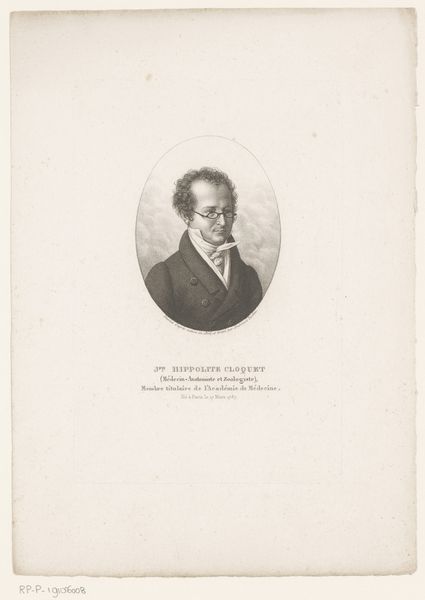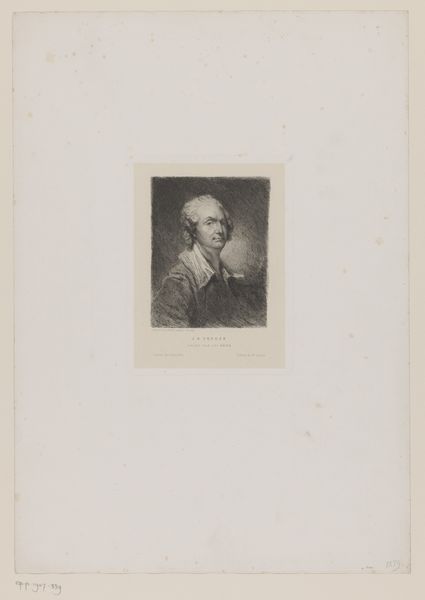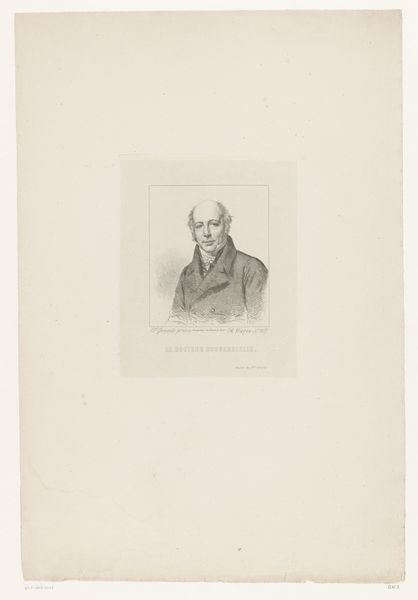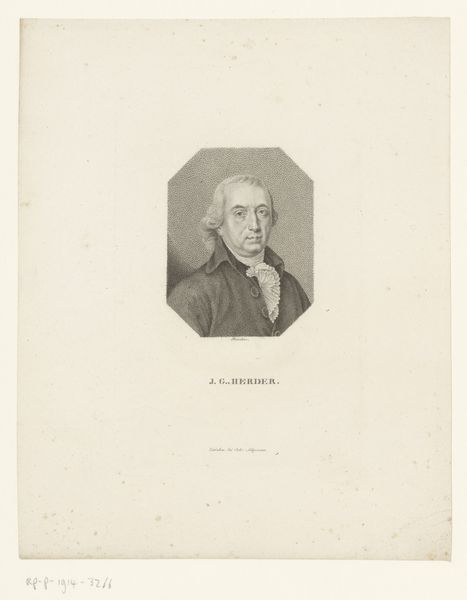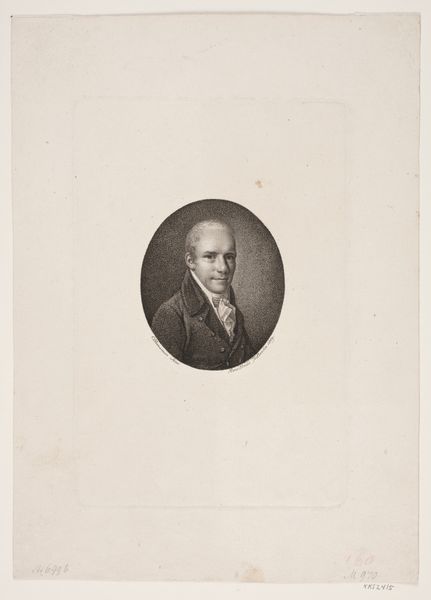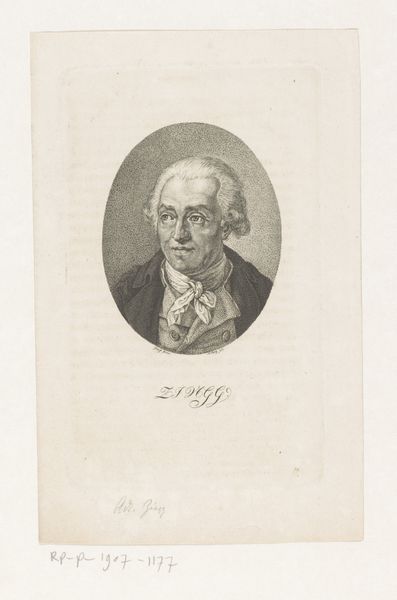
print, engraving
#
portrait
#
neoclacissism
# print
#
academic-art
#
engraving
Dimensions: height 220 mm, width 143 mm
Copyright: Rijks Museum: Open Domain
Curator: Right, let's delve into this print, "Portret van Dominique Sébastien Léman" created in 1827 by Ambroise Tardieu. It’s an engraving, a fairly standard medium for portraits at the time, wouldn't you agree? Editor: Standard perhaps, but there’s something terribly intimate about it despite that formality. Almost a melancholic tenderness… it gives the sense of seeing right through him. Those eyes! Curator: Yes, Tardieu's academic approach highlights form and structure. Note how the oval frame imposes classical ideals, yet the detailed rendering of Léman’s face fights against that, presenting his humanity vividly. Editor: It’s the specificity of the shading for me—those wrinkles, the gentle slope of his nose… almost lovingly rendered! One can practically smell the dusty shelves of botanical books surrounding him. Makes you want to know the stories those eyes could tell. Curator: Precisely. Tardieu balances neoclassical restraint with a tangible sense of the individual. See how the tight hatching defines the volume of the jacket and the soft gradients suggest the face's roundness? There is mastery at play here. Editor: Do you think he enjoyed being rendered so publicly, in essence framed by posterity? Curator: Interesting question. I suspect it served practical and professional purposes as much as anything else. Public image mattered in cementing one's intellectual standing back then. It allowed others to associate the person and his image and his botanical/mineralogical work at a distance. Editor: In this very age of visual explosion it is interesting to meditate on portraiture as it once existed. Before a flood, each likeness had the heft of intent. Curator: Agreed, it serves as a window into both an era and the man himself. Editor: Yes. Well put!
Comments
No comments
Be the first to comment and join the conversation on the ultimate creative platform.
